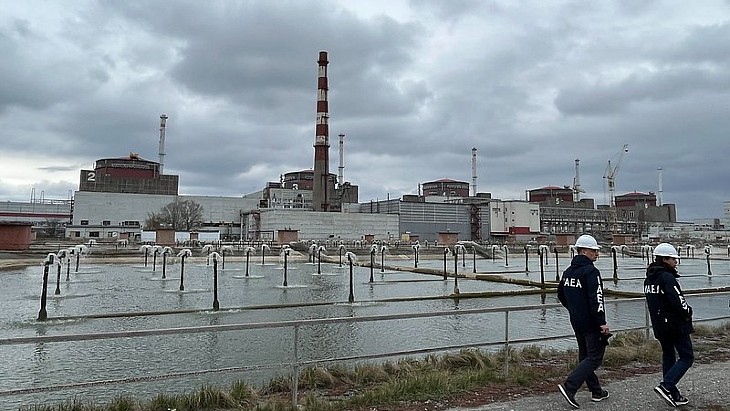The Zaporizhzhia nuclear power plant is the largest in Ukraine, and Europe, with six reactors. It is located on the current frontline between Ukrainian and Russian forces. It has been under the control of Russian military forces since the start of March 2022.
IAEA Director General Rafael Mariano Grossi has spent months seeking to get agreement from both sides that the nuclear power plant should be protected and not be fired upon, or fired from, to reduce the risks of intentional or unintentional damage from the military conflict around it.
In a statement at the weekend, he said: "I’m extremely concerned about the very real nuclear safety and security risks facing the plant. We must act now to prevent the threat of a severe nuclear accident and its associated consequences for the population and the environment. This major nuclear facility must be protected. I will continue to press for a commitment by all sides to achieve this vital objective, and the IAEA will continue to do everything it can to help ensure nuclear safety and security at the plant."
He added that he had "deep concern" for the operating staff at the plant, many of them still the Ukrainian staff from before the war began, and the "increasingly tense, stressful and challenging conditions" they and their families face.
The IAEA, which has had experts statione,d at the plant on a rotating basis since last September, said that the site director had said that operating staff were not being evacuated and that numbers of staff were being maintained at a level that was sufficient for the safe operation of the plant.
According to Tass news agency the region's acting governor Yevgeny Balistsky said on Friday that residents of 18 settlements (about 70,000 people in total) were to be relocated "due to intensified shelling" under what officials said was a voluntary evacuation.
Ukrainian nuclear power plant operator Energoatom, said on Saturday that five of the six units are in cold shutdown and one remains in hot shutdown, where it does not generate electricity, but does produce heating for the plant and the nearby area.
Since the Russian military occupied the plant 15 months ago, the site and nearby areas, have been hit by shelling on a number of occasions, with each side blaming the other. It has also lost external power and had to reply on its emergency diesel generators to maintain essential safety and cooling functions.





_47120.jpg)

_23621.jpg)






